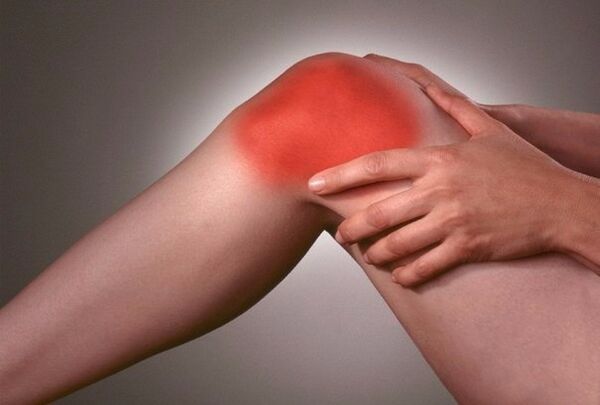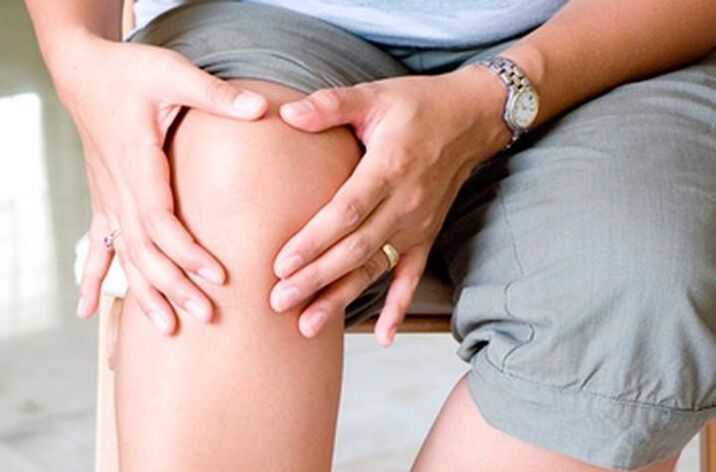
Arthrosis refers to a pathological process characterized by dystrophy and degeneration of the articular cartilage. As a rule, the matter is not limited to cartilage alone: later the pathology spreads to the bone (subchondral) located under the cartilage. Therefore, osteoarthritis is also called osteoarthritis. And since all of these disorders ultimately lead to a change in the structure of the joint, this process is called deforming osteoarthritis, which can affect any joint. In clinical practice, osteoarthritis of the knee joint or gonarthrosis is noted in most cases.
The essence of the pathology
In terms of frequency and prevalence, osteoarthritis of the knee is second only to osteoarthritis of the hip joint (coxarthrosis). To find out what caused this, it is worth briefly dwelling on the features of the anatomical structure of the knee and the functions it performs. This is one of the most massive joints, in the formation of which 3 bones are involved: the femur, the tibia and the patella. Therefore, it is a complex joint consisting of 2 joints: the patellofemoral and patellofemoral joints.
The articular surfaces of all 3 bones are covered with cartilage, which facilitates movement in the joint and protects the subchondral bone tissue from mechanical wear. In addition to the articular cartilage itself, the knee has menisci - paired cartilage formations that improve congruence (anatomical correspondence) of the articular surfaces. Articular cartilage does not have its own blood vessels. Its nutrition is carried out diffusely by the intra-articular (synovial fluid). Like a sponge, cartilage contracts under mechanical stress during movement, carrying heavy loads. At this time, waste products are released from the cartilage tissue into the surrounding synovial fluid. On the contrary, at the time of relaxation, rest, the synovial fluid and the nutrients contained in it penetrate the cartilage of the knee.
For a variety of reasons, the nutrition of the articular cartilage of the knee joint is disturbed, which leads to osteoarthritis of the knees. At the same time, at the beginning, there is a shortage of nutrients in the cartilage tissue: chondroitin sulfate, glucosamine, calcium and other microelements. Moisture is lost. This is a process of dystrophy, followed by degeneration - thinning of the joint cartilage. In turn, these negative processes lead to structural and motor disorders in the knee joint.
Osteoarthritis of the knee is often mistaken for salt deposits. For example, some mineral salts, including table salt, are deposited in the form of microcrystals in the joint cavity, which leads to pain and movement disorders. This is not true. Apparently, a completely different process is adopted for the deposition of salts. In response to the destruction of joint cartilage in subchondral bone, marginal bone growths - osteophytes - are formed to stabilize the knee at least to some extent. However, in the future, osteophytes only aggravate osteoarthritis and contribute to the further destruction of cartilage.
causes
The causes of osteoarthritis of the knee joint are different and may be due to the pathology of the knee itself, or to other diseases and metabolic disorders. In this regard, gonarthrosis can be primary and secondary. The mechanism of primary osteoarthritis is not fully understood. It is believed that in this case the disease is caused by a combination of factors, including:
- Advanced age, when degenerative changes occur not only in the articular cartilage, but also in all organs and tissues;
- Overweight, which increases mechanical stress on the joint;
- Physical inactivity, or vice versa, excessive physical activity;
- Some congenital anatomical disorders of the knee, in which the articular cartilage and subchondral bone are initially impaired;
- General metabolic disorders leading to a change in the mineral composition of the synovial fluid.
Secondary osteoarthritis of the knee joints is a complication of other diseases. Most often, such diseases are arthritis of various nature: gouty, rheumatic, rheumatoid, septic, tuberculous, etc. In these diseases, various pathological factors (infection, perverse immune reactions, uric acid crystals) form the inflammation of the synovial membrane in the form of the so-called. synovitis. Synovitis is necessarily accompanied by a deterioration in the quality of the synovial fluid, which in turn leads to osteoarthritis.
Another common cause of osteoarthritis is knee injuries. Post-traumatic osteoarthritis of the knee joint is a consequence of an intra-articular fracture of the femur and tibia, hemarthrosis (joint hemorrhage), damage to the knee ligaments and menisci. Here, the pathology is based on a mechanical factor (damage) and the damage that develops after it (arthritis). Furthermore, osteoporosis is often accompanied by osteoarthritis. The lack of calcium in the bones leads to the destruction not only of the bone, but also of the cartilage tissue.
Symptoms

The main symptoms of osteoarthritis of the knee joint:
- Ache;
- Impaired knee movement
- Difficulty walking
- Crackling when moving;
- First - pathological tension, and then - muscle atrophy of the lower limb;
- Deformity of the knee joint.
At first, as a rule, the patellofemoral joint suffers, which accounts for most of the functional load. In general, knee pads with osteoarthritis are perhaps the most vulnerable. It is from the cartilage of the patella that dystrophic changes begin in osteoarthritis. Clinically, this is manifested by swelling and pain when this bone is felt. As a result of dystrophic changes, the articular cartilage undergoes sclerotic changes - it loses its elasticity, is replaced by coarse connective tissue.
Subsequently, the joint sac and the ligament apparatus undergo sclerotic changes. The joint configuration changes. Initially, due to concomitant arthritis, it is swollen, inflamed. Subsequently, with the progression of degeneration and sclerosis, the amount of synovial fluid decreases sharply, the joint space narrows, which inevitably leads to movement disorders. At first, the gait is difficult and the limb muscles are tense. Then ankylosis develops - complete immobility of the knee and, as a result, atrophy of the muscles of the thigh and lower leg. All these changes take shape over a long period of time. In this regard, there are 3 degrees of arthrosis:
- I degree knee joint arthrosis. The pains are mainly located in the patella area and along the inner surface of the knee joint. The pains are of an "initial" nature: they appear at the beginning of the movement and then subside. In addition, pain can appear with significant exertion (long walking, carrying weights) and disappear after rest. There are no structural changes in the joint at this stage.
- 2nd degree knee joint arthrosis. The pain can also manifest itself at rest and disturb for a longer time. Limitations of range of motion (contractures) appear in the knee. The patient limps, he has to move with a stick. Inflammatory and dystrophic changes are formed in the joint, externally manifested by an increase in the knee due to edema.
- 3rd degree knee joint arthrosis. Severe pain in the knee that does not stop even after a long rest. Severe irreversible disorders in the structure of the joint, leading to ankylosis and loss of the ability to move. Change in the configuration of the entire lower limb, manifested by its curvature in valgus or varus (in the shape of O or X).
Diagnosis of osteoarthritis of the knee is made on the basis of the aforementioned symptoms and complaints of the patient, as well as radiographic data (narrowing of the joint space, osteophytes, osteoporosis, bone hardening). Gonarthrosis is treated in a complex with the use of drugs and physical procedures. With osteoarthritis of the 3rd degree, surgical intervention is indicated, during which various types of plastics of the knee joint are performed.
















































